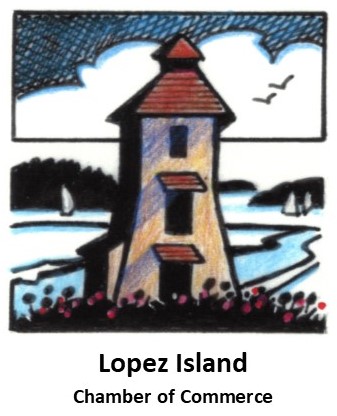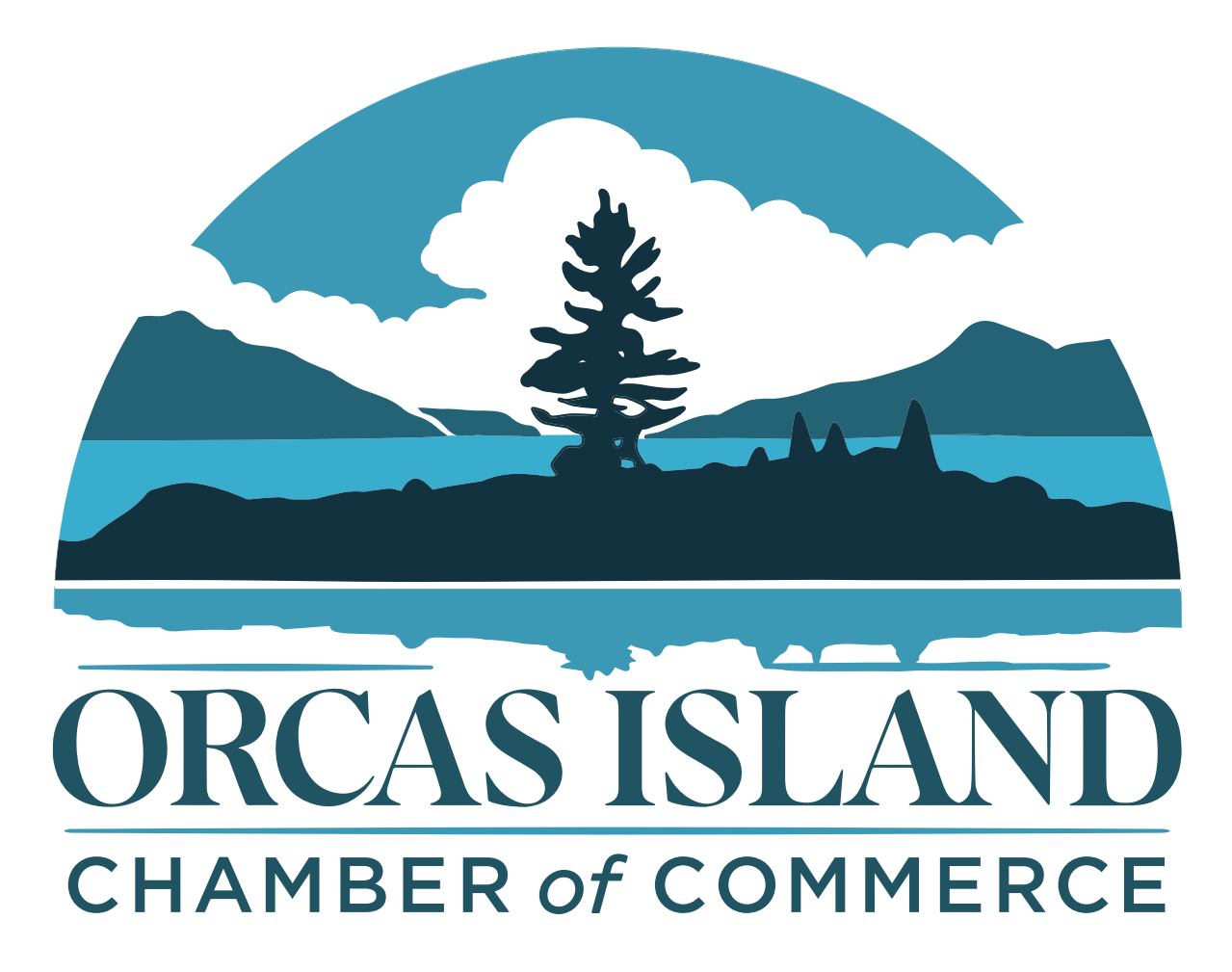Finding Our Way Around: One Family's Accessible Adventure on San Juan Island
History, wildlife, nature, and art abound in the Salish Sea outside of Seattle
When you come to San Juan Island with kids, the Salish Sea island’s town of Friday Harbor is typically the first and last place you’ll see. In addition to having the ferry dock that runs between San Juan and Anacortes, WA, the 2,500-population town in this far corner of the Pacific Northwest is the largest community among all the San Juan Islands in Washington State.
Friday Harbor is a beautiful waterside spot, full of activities, dining options, shops, and more. But beyond the town, a seemingly vast island beckons. It offers peace of mind, a rested heart, plus the quiet joy of finding yourself and connecting with those you love. Amidst the hills, forests, lakes, and seascapes beyond Friday Harbor, vibrant nature, vast history, and powerful creativity await. All you need to do is take the drive, just like our family did on a spring visit to this green island and its blue waters.
We want to thank the San Juan Islands Visitors Bureau for sponsoring our visit. However, this article reflects our own personal opinions and experiences.
The perks of visiting San Juan Island during shoulder season
Summer is the prime travel season for San Juan Island. It’s understandable. Weather can be ideal on the island, and summer is a natural time for family vacations.
However, much of the island’s wonder can be especially appreciated, with no crowds, in shoulder seasons such as spring and fall. Our family of four—Anthony, Jodie, 11-year-old Connor, and 8-year-old Aster—finds that traveling in shoulder season makes it easier to snag parking and get in at the attractions and activities we prioritize—all the easier as we made our way around San Juan Island in our 25-foot Class C RV.
Spring and fall can be prone to rain and cooler temperatures, but savvy family travelers can pack accordingly. Hours can vary, and services at some places may be limited. However, we find that the benefits of traveling in shoulder season far outweigh potential downsides.
San Juan Island accessibility: Considerations for travelers with mobility impairments
San Juan Island continues to work on improving accessibility. However, historic and natural attractions have mixed access. Some attractions may be hard to navigate in a wheelchair, or if you have limb or joint considerations.
Jodie is an above-the-knee amputee who uses a prosthetic leg and a trekking pole. We typically seek out trails that are level and short. She can navigate uneven terrain, but you won’t see us doing much that requires big changes in elevation. Often we find that activities that work for Jodie and our kids can often work well for senior citizens, people who have joint or back issues, and parents with babies or small children.
Above all, we trust you to make the right choice for your abilities and circumstances, and hope that learning about our family’s travels and decisions helps you travel in the way that works for you.
Camp, glamp, or lodge at Lakedale Resort
From rentals to B&Bs to hotels, a range of accommodation dots San Juan Island. However, driving our RV inland from Friday Harbor, we soon came to a peaceful spot in the woods. Lakedale Resort is not so much by a lake or on a lake. Actually, the resort—complete with a glamping tent section, an adults-only lodge, and tent and RV camp sites—is on a sort of island in the middle of not one lake, but three: Dream Lake, Neva Lake, and Fish Hook Lake.
Calm suffuses Lakedale, along with morning and evening light that softens the day. Surrounded by water, hills, and conifer forests, we quickly settled into a safe space where the kids could romp in nature. We sought out game areas for bocce ball and giant-sized Connect Four, laughing and talking just a little bit of trash as the sun went down.
And when you want to head into other parts of the island, Lakedale is only about 10 minutes from Friday Harbor. Other parts of the island, such as San Juan National Historical Park on the southern stretch of the island, or Lime Kiln State Park on the western shore, are less than 20 minutes away.
Drive the San Juan Islands Scenic Byway


The morning began with a welcoming, temporary coolness in the air, mist on the forested hills surrounding the three lakes, and a gentle patter of rain on the roof of the RV. By the time we set out for the day, the rain had subsided, leaving only a hint of mist that soon subsided as well.
Perfect, then, for a drive around the island.
The San Juan Islands Scenic Byway Drive doesn’t just encompass San Juan Island, but Orcas Island and the ferry routes (including the ferry stop at Lopez Island). The San Juan Island portion rings around the island, plus a tail through the southern peninsula. Driving the full 41 miles without stops only takes about an hour and a half—less time than it takes to watch Moana—though with so many stops along the way, you can easily take a half day, full day, or a couple of days trip to complete the circuit.
From the full outer perimeter of San Juan Island, taking your pick of historical, cultural, natural, and artistic stops along the way, such as:
The roads are easy-going, with no need to be in a rush. Here are some of the stops that stood out to us.
San Juan Islands Sculpture Park
In the forest, the chained dragon awaits. Or near the pond, you can wander among orcas. Poems line the slightly sloped path next to the parking lot. And in a sandbox shaped like a starfish, kids of all ages can build their own sculpture among the shifting sands.
The garden aims to accommodate a range of mobilities. The gravel parking lot is large, and most of the area is an open field, though the ground overall is more level closer to the parking lot. Path surfaces vary, and include grass, pea gravel, and dirt. Narrow side paths lead into the woods, where the trails also are bumpier and have more slope. If walking, like Jodie does, a walking stick or trekking pole comes in handy.
The 20-acre property reveals sculptures at every turn. For visiting San Juan Island with kids, we’d come back here just to play Rock Paper Scissors on a sculpture again.
English Camp
Anthony couldn’t wait to talk with the kids about how, on this very island, in 1859 a pig started a twelve-year standoff that could have become a war between the US and British-controlled Canada.
Or rather, a British pig wandering into an American’s farm, chewing on the farmer’s crops and getting shot by said farmer had a fair bit to do with it too. Even then, the pig was not responsible for the ultimate mess, which was conflict and confusion over how to set the maritime boundary in this region between the US and Canada.
While American Camp was set up on the southern end of San Juan Island, English Camp occupied a scenic lowland area at the bottom of a slope along Garrison Bay. We walked through the preserved, fenced garden, where we could imagine leaves from a large patch of sage adding savor to meals. Nearby rosemary hinted of lemon with a salty edge. Camas greens were coming up, and a lone, pale, pink tulip unfurled, determined to see spring come into its full.
“Daddy,” said Aster, “will you lie down in the grass next to me?”
The late April sun warmed our faces, and the grass tickled the back of our necks.
“This is so relaxing,” she said. “Lying on the grass makes me feel so calm.”
History found calm too. Eventually, the pig dispute was settled, the border was set—firmly establishing the San Juan Islands as US territory—and, after a mere twelve years, English decamped.
Krystal Acres Alpaca Farm
Our boots and sandals crunched across the gravel from the shop to the alpaca corral at The Farm at Krystal Acres. A dozen alpacas meandered behind the fence, munching grass and seeing which visitors had bought bags of pellet treats from the shop, which also has a variety of alpaca wool clothing and accessories for sale.
The kids giggled as we watched the alpacas wander. Aster and Anthony poured treats into our hands, and giggled as the soft, plush lips of snacking alpacas danced over our palms.
Among the orcas


Throughout the year, tours from Friday Harbor give visitors the chance to be among the orcas, gray whales, and other amazing creatures that use the straits of the Salish Sea as their feeding grounds, home, and highway. When making a getaway to San Juan Island with kids, a whale watching tour is a must, and staff can help visitors with varying mobility needs.
We took the opportunity to come into town early. Before picking up lunch to take on the boat, we’d stop by a special place that could give us more context, history, and understanding of the incredible creatures we were hoping to encounter.
The Whale Museum, Friday Harbor
When it opened in 1979, the Whale Museum was the first institution to promote conservation of whales and orcas. Downstairs, the children watched a video on the construction of orca skeletons and models. Heading upstairs (and passing a chair lift at the bottom of the stairs), we met a life-size version of a much-loved book.
When the kids were younger, we often read them a book called Storm Boy. Here, the book and its themes in Indigenous mythology came to life with displays and cultural context.
Other displays tell you about the many orcas who have been monitored over the years. The work culminates in a genealogy chart of Salish Sea orcas, a family tree for the creatures we were about to see.
Whale Watch & Wildlife Tour with San Juan Safaris
With a degree in ecology, ten years experience running wildlife tours, and 25 years of living on San Juan, Captain Eric piloted our whale watching ship, the Sea Lion, into the Salish Sea. Our guide, Olivia, whose resume includes wildlife and ecology work in Costa Rica and New Zealand, pointed out that these tours weren’t only an opportunity to see whales and orcas.
“I’ve counted twenty-eight bald eagles in one tour,” she said. “The beak and neck stand out like a golf ball on a green.”
Eric explained that he and Olivia would be in constant touch with other people on the water, sharing reports on orca whereabouts. We’d be looking for any of the two types of orca common in these waters. However, these two groups of orcas were so different, they used different dialects, ate different food, displayed distinct culture, and didn’t hang out or interbreed.
Along with the kids, from the cabin, the covered deck, or the open-air sides or bow of the ship, our group all watched for the tall black dorsal fin of the orca.
“There’s nothing else like it on the water,” said Olivia.
Orcas often weave in between the 743 land masses in the islands, especially when it comes to seeking food. Orcas here get names, and people learn to identify individual orcas from markings on their fins, bodies, and heads. Spouter, for example, has an older brother named Galiano. We might also see Esperanza, Nootka, or Nand.
A report came through: orcas nearby, perhaps chasing a sea lion. Eric kicked the boat into gear.
Waiting, and experiencing, together
The blue water rippled as the boat came to a stop. We looked around, trying to take in each wavelet and ripple, every shadow that might be the black sail of a dorsal fin.
Then Aster shouted, “Orcas! Orcas!”
Triangular sails of tall dorsal fins rose from the blue waters. Sometimes we saw one, sometimes two. Eventually, four fins broke the surface, two large and two small, as two adults and two juveniles arced in and out of the water together in close formation.
The joy of going on a wildlife tour isn’t just about experiencing the animals. The blue water, the forested islands, and the distant snowy mass of Mt. Baker in the North Cascades surrounded us. Watching for orcas brings out excitement, anticipation, and the thrill of knowing that just below, unseen in the waters, is its own world.
Orcas rose and dove with a sleek grace that made them seem less in the water than of the water. We watched the orcas. Together. Because that’s the best part. Not just seeing the animals and enjoying the beauty of the day. It’s knowing that we as a family, and our children above all, are building memories of togetherness, serendipity, and of being in the moment for something amazing.
San Juan Island Brewing Company
After the context, history, culture, and perspective of the Whale Museum; the nature and serendipity of the stops we made along the Scenic Byway; and the marvel, wonder, and amazement of being up close with orcas, we finished our last day on the island at the beautiful San Juan Island Brewing Company in downtown Friday Harbor.
Big, bright, high ceilings opened up the airy space, enhancing the conviviality and welcoming feel of the pub. Natural light flooded through the glass windows of the roll-up doors along two sides of the building, and the brewery’s steel tanks gleamed from behind tall, broad glass windows.
As golden-orange light of the setting sun filled the brewery, Jodie and Anthony tucked into luscious salads, topped with moist, sweet, meaty salmon. She paired hers with the Black Boar English Style Porter, nicely balanced with roasted flavors and a snappy, bitter finish. His smooth, malty ESB carried just the right amount of hop to refresh me after the big adventures of our past few days.
Calm, wonder, and connection await on San Juan Island
From Friday Harbor to Roche Harbor, English Camp to American Camp, the hills of the island’s center to the blue waters where orcas dive, This is a place where history, nature, and creativity come together. Visiting San Juan Island with kids in the shoulder season helped us travel at a slower pace, and it wasn’t uncommon for us to have a stop or attraction all to ourselves.
Above all, San Juan Island—in Friday Harbor or beyond—is a place where the four of us found calm and connection, within ourselves as people, with the broader communities of the island, with the eagles in the sky and the orcas in the sea, and above all, between the four of us as family.

About the Authors: We are the Learners & Makers! We’ve always moved to our own beat...Then we started a family. An amputee mom, an involved dad, and two curious kids: Traveling as a family inspires us and helps us inspire others!






